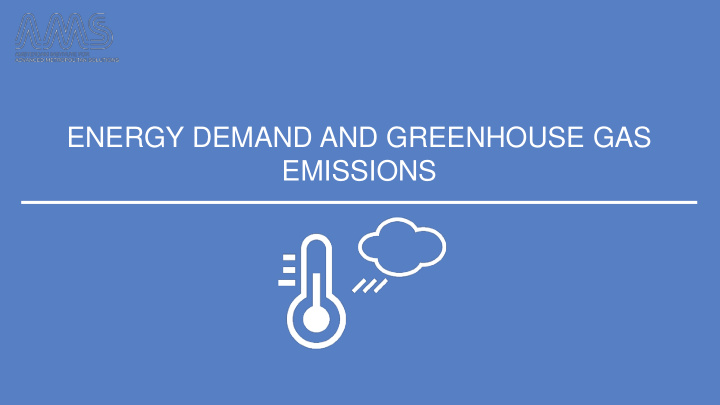



ENERGY DEMAND AND GREENHOUSE GAS EMISSIONS
INCREASE IN ENERGY DEMAND Grubler, A., T. B. Johansson, et. al, 2012
WHERE DOES OUR ENERGY COME FROM? Global Energy Assessment Global energy mix in 2009
TREEAID | CC-BY | https://flic.kr/p/9FYhnJ
Rehman | CC-BY | https://commons.wikimedia.org/wiki/File:ThreeGorgesDam- China2009.jpg#/media/File:ThreeGorgesDam-China2009.jpg
TAFE SA TONSLEY | CC-BY | https://flic.kr/p/kgK53B
Gapminder.org | CC-BY-NC-SA 4.0 | www.bit.ly/11rv4NV
GREEN HOUSE GAS EMISSIONS PER COUNTRY MacKay, D. (2008).
ENERGY DENSITY OF FOSSIL FUEL AND BIOMASS
ENERGY DENSITY OF FOSSIL FUEL AND BIOMASS 4000 litre = 1°C 1000 litre = 1°C
Brian Snelson | CC-BY | https://flic.kr/p/5nsnAk
ENERGY CONSUMPTION PER CAPITA IN 2001 United Arab Emirates Kuwait United States Netherlands Germany Philippines China Brazil World Resources Institute, 2003 Vietnam Ghana Yemen 0 20000 40000 60000 80000 100000 120000 140000 Yearly annual energy in consumption in kWh/cap/a
AVERAGE ENERGY IN A HOUSEHOLD IN THE US Other 8 % Refrigeration 8 % Appliances 9 % Electronics 9 % Lighting 12 % International Energy Agency, 2014 Warm water 12% Cooling 12% Heating 31 %
AVERAGE ENERGY IN A HOUSEHOLD IN THE US Other 8 % Refrigeration 8 % Electrical appliances Appliances 9 % Electronics 9 % Lighting 12 % International Energy Agency, 2014 Warm water 12% Thermal comfort Cooling 12% Heating 31 %
CLICK THE LITTLE ICON TO PLACE YOUR FULL SCREEN IMAGES. (AFTER YOU PLACED THE IMAGE YOU CAN USE THE ICONS BELOW THE IMAGE TO ADJUST PLACEMENT TO YOUR LIKING) Christoph Richter, Daniel Lincot and Christian A. Gueymard, 2013
REFERENCES • Slide 3: Grubler, A., T. B. Johansson, et. al, 2012: Chapter 1 - Energy Primer. In Global Energy Assessment - Toward a Sustainable Future , Cambridge University Press, Cambridge, UK and New York, NY, USA and the International Institute for Applied Systems Analysis, Laxenburg, Austria, pp. 99- 150. • Slide 4: Global Energy Assessment - Toward a Sustainable Future, Cambridge University Press, Cambridge, UK • Slide 9: MacKay, D. (2008). Sustainable Energy-without the hot air . UIT Cambridge, ISO 690 • Slide 13: World Resources Institute, (2003). World resources 2002 - 2004. Washington: World Resources Institute. Retrieved: http://www.wri.org/sites/default/files/pdf/wr2002_fullreport.pdf • Slide 14: International Energy Agency, ( 2014). Energy Efficiency Indicators: Fundamentals on Statistics. Retrieved: https://www.iea.org/publications/freepublications/publication/IEA_EnergyEfficiencyIndicatorsFundame ntalsonStatistics.pdf • Slide 16: Christoph Richter, Daniel Lincot and Christian A. Gueymard (Eds.): Solar Energy, Springer , 2013
Recommend
More recommend